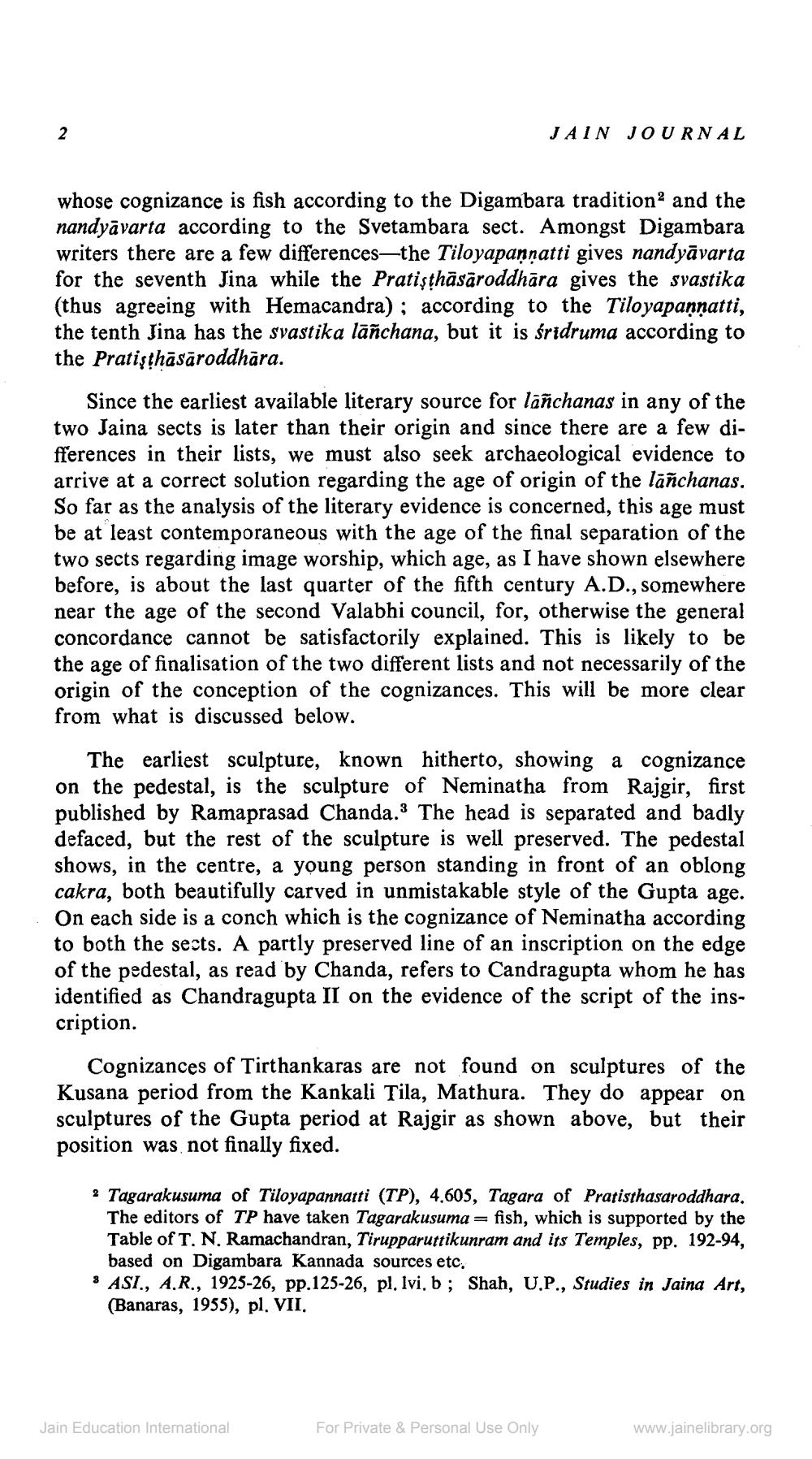Book Title: Jain Journal 1981 07 Author(s): Jain Bhawan Publication Publisher: Jain Bhawan Publication View full book textPage 8
________________ 2 whose cognizance is fish according to the Digambara tradition2 and the nandyavarta according to the Svetambara sect. Amongst Digambara writers there are a few differences-the Tiloyapaṇṇatti gives nandyāvarta for the seventh Jina while the Pratiṣṭhāsāroddhāra gives the svastika (thus agreeing with Hemacandra); according to the Tiloyapanṇatti, the tenth Jina has the svastika lañchana, but it is śridruma according to the Pratisthāsāroddhāra. JAIN JOURNAL Since the earliest available literary source for lanchanas in any of the two Jaina sects is later than their origin and since there are a few differences in their lists, we must also seek archaeological evidence to arrive at a correct solution regarding the age of origin of the lāñchanas. So far as the analysis of the literary evidence is concerned, this age must be at least contemporaneous with the age of the final separation of the two sects regarding image worship, which age, as I have shown elsewhere before, is about the last quarter of the fifth century A.D., somewhere near the age of the second Valabhi council, for, otherwise the general concordance cannot be satisfactorily explained. This is likely to be the age of finalisation of the two different lists and not necessarily of the origin of the conception of the cognizances. This will be more clear from what is discussed below. The earliest sculpture, known hitherto, showing a cognizance on the pedestal, is the sculpture of Neminatha from Rajgir, first published by Ramaprasad Chanda. The head is separated and badly defaced, but the rest of the sculpture is well preserved. The pedestal shows, in the centre, a young person standing in front of an oblong cakra, both beautifully carved in unmistakable style of the Gupta age. On each side is a conch which is the cognizance of Neminatha according to both the sects. A partly preserved line of an inscription on the edge of the pedestal, as read by Chanda, refers to Candragupta whom he has identified as Chandragupta II on the evidence of the script of the inscription. Cognizances of Tirthankaras are not found on sculptures of the Kusana period from the Kankali Tila, Mathura. They do appear on sculptures of the Gupta period at Rajgir as shown above, but their position was not finally fixed. 2 Tagarakusuma of Tiloyapannatti (TP), 4,605, Tagara of Pratisthasaroddhara. The editors of TP have taken Tagarakusuma fish, which is supported by the Table of T. N. Ramachandran, Tirupparuttikunram and its Temples, pp. 192-94, based on Digambara Kannada sources etc. ASI., A.R., 1925-26, pp.125-26, pl. Ivi, b; Shah, U.P., Studies in Jaina Art, (Banaras, 1955), pl. VII. Jain Education International For Private & Personal Use Only www.jainelibrary.orgPage Navigation
1 ... 6 7 8 9 10 11 12 13 14 15 16 17 18 19 20 21 22 23 24 25 26 27 28 29 30 31 32 33 34 35 36 37 38 39 40 41 42 43 44 45 46
